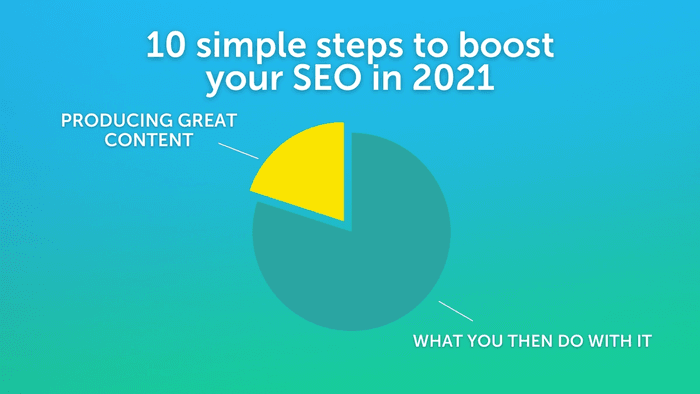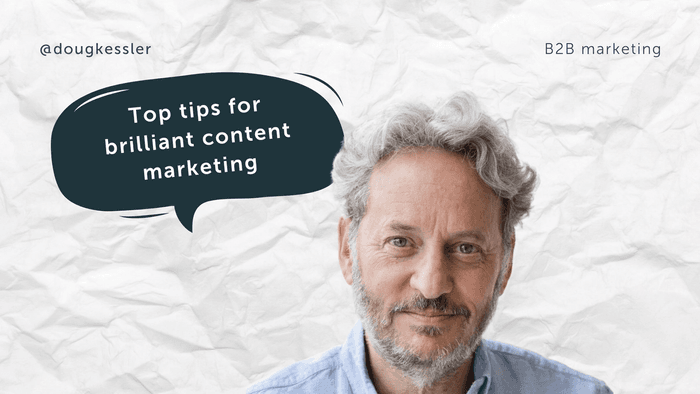Content Marketing & SEO
Goldilocks and the four lessons in B2B storytelling
There was once a girl called Goldilocks, one day she walked into the 3 bears house, sat down, ate the porridge, and went to sleep.
Hmmm, hardly a memorable story, and hardly a tale that would be told to generations.
But that's not how the story went, was it?
Goldilocks was a lot harder to please than that, and we can guarantee you know what went down in the three bears cottage because Goldilocks and The Three Bears wouldn't be much of a story, nor would it be memorable, if everything was just right.
So what can we learn from Goldilocks’ tale that we can apply to B2B storytelling?
Lesson 1: Don’t fall into the lazy marketing trap
What would happen if Goldilocks only found porridge that was too salty, a chair that was too high and a bed that was too soft?
The thing about storytelling is that it isn’t what you say but it is how you say it, and even more importantly, how you make it interesting.
Take a lot of B2B businesses – their marketing is in fact self-promotion and nothing more. 'The best data processor', ‘market-leading technology'… etc. in short, who cares? Outside of executives at the individual businesses. So many B2B businesses list their USPs but fail to say why they matter or what pain points they solve. Yet they still expect their prospects to read it, care about it and most importantly, take action AND respond.
Lesson 2: Understand your customer’s pain points
To execute B2B storytelling effectively, you need to go beyond your own assumptions and expectations of your product and/or service and put yourself in the shoes of your customers.
You need to understand who your target market is, how their industry works and, most importantly, what other benefits your solution will have for them.
In the tale of Goldilocks, Goldilocks is a house-breaking, furniture-smashing porridge thief, but thanks to good storytelling, we can relate to her, we can understand what she’s looking for and can feel her satisfaction when she finds it. Does it strike a chord with us when the porridge is too salty, too sweet, and finally just right? Yes, it does – storytelling in B2B marketing needs to have the same effect.
It needs to go beyond business problems – appeal to different stages of your prospective buyer’s journey, their frames of mind and their concerns. How will your product and/or service make their lives easier?
B2B buyers are drawn to honest, relatable stories that show a clear understanding of their needs and concerns and the more you empathise with them and their pain points, the more likely they are to purchase.
Lesson 3: Create a sense of urgency
A porridge tasting session isn’t exactly a high-stakes thriller. Add three bears out on a walk, due back to eat that porridge at any minute, and the tone changes. Suddenly, there is tension. There is conflict. There is urgency. The story draws us in, and we pay attention to the points made. And it’s these things that lift B2B storytelling from a nice to have to a must-have in your marketing arsenal.
Through storytelling, you can set the scene and not only illustrate why your prospects need your product but why they need it right now. Done well, it resonates with their pain points and their market challenges. It shows conflict and resolution that is far more powerful than a product description.
Lesson 4: Use visual content
Our brains are far more engaged by storytelling than a list of facts and B2B storytelling needn’t restrict itself to just words on a page. Children’s books, like Goldilocks and The Three Bears, use different forms of visual content for a reason. Whether using graphics, customer videos, or short video animation, storytelling visuals add a component that text alone cannot: speed.
Pairing your B2B storytelling strategy with visual content, will leave a lasting impression in the minds of your consumers. 80% of people remember what they see, compared to ten percent what they hear and 20 percent of what they read, which is why no B2B storytelling strategy is a winner without good design or effective video content.
That's potentially 80% more customers who will remember your product or message and who will potentially want to buy it. With those stats surely it’s time to introduce storytelling to your business?
How to bring effective storytelling into B2B marketing
In our Ultimate Guide to Storytelling, we cover the what, the why and the how of storytelling in B2B, and give you exactly what you need to get started. To find out more about creating a memorable brand (and securing sales) through storytelling, download The Ultimate Guide to B2B Storytelling today.
Share this:




